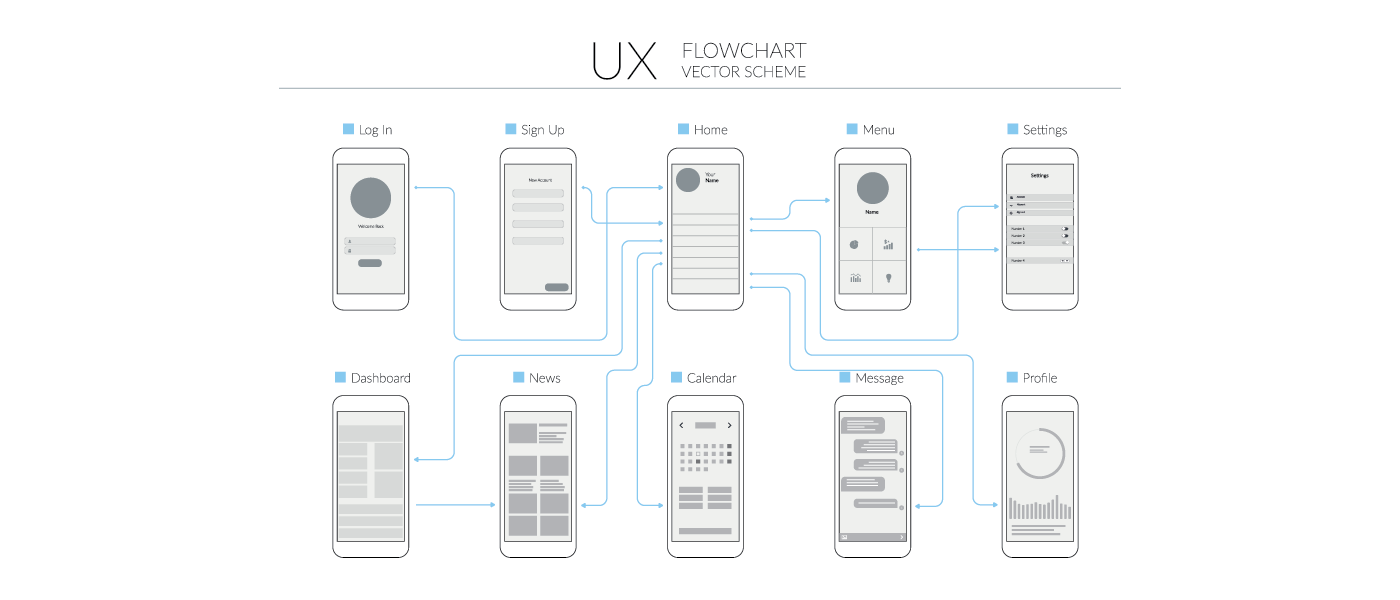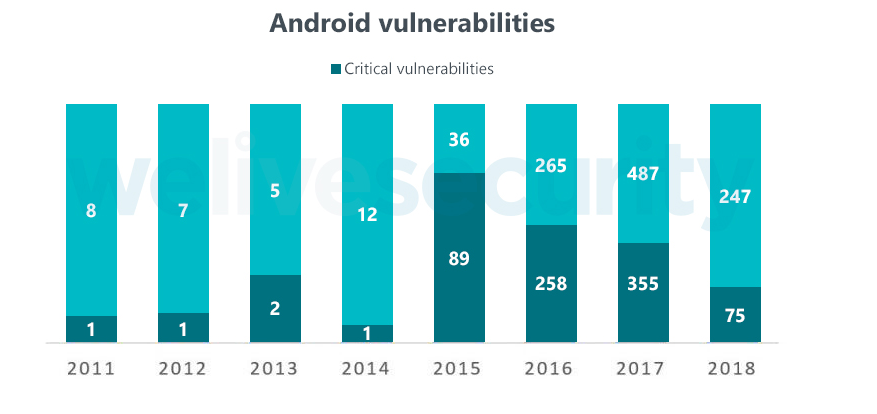Category: Enterprise Mobility
Experts from Fingent offer insights on various topics ranging from enterprise app development, the compatibility of Odoo for businesses and tips to scaling down enterprise app development cost. We also focus on the significance of the academic research in driving innovation. Let’s dig in!
Enterprise App Design: Does iOS Fare with Android in terms of Security? | ReadWrite
With Apple constituting a major share of the world smartphone market, iOS tend to be the most preferred platform in enterprise app development. But there are stronger competitors in the current market competing directly with iOS. Google-owned Android have fared remarkably well in the mobile market largely due to its swift integration with Google’s extensive services, flexibility, and support.
So, will iOS fare with android in terms of security?
How Academic Research is Driving Innovation and Growth | Emerald Insights
The acceptance of academic research among enterprises has been low, not because of its lack of value, but due to underutilization. Propelling innovation within an enterprise rests chiefly on relying on information derived from external sources. In this case, academic research from universities seems a valuable cache of information that enterprises can depend on for using in all their crucial processes and operations.
How Compatible is Odoo for Your Business | This Host Rocking
Having an ERP system integrated into your workplace can guarantee efficiency and productivity. So, what can you gain from integrating one into your business? An ERP solution can lift the burden of operations by shifting to a software-based model. It allows you to streamline, organize and integrate your core business processes.
Tips to Scale down on Enterprise App Development Costs| DZone
Enterprise apps are extremely popular now. However, developing apps can turn out to be a costly endeavor. Here are some tips to keep costs in check, while still developing high-quality apps. Developing large scale enterprise apps can be incredibly expensive, so take a look at how you can cut costs with these tips.
What you didn’t know about creating iPhone apps | BEST IN AU
Developing apps for iOS is something you can learn from a certified developer training program or by using tutorials on the web. But mere technical knowledge is inadequate if you fail to comply with the regulations of the App Store. Knowing about these can ensure that your app never gets rejected from the App Store citing compliance issues. Besides, it can provide a certain amount of guarantee about your app’s success and popularity. Here are some crucial things they never say but you should understand when making apps for iPhones.
Stay up to date on what's new

Featured Blogs
Stay up to date on
what's new



Talk To Our Experts
The cloud is growing at an exponential pace, with more and more businesses being sold to the innumerable benefits it offers. One software segment which has seen almost wholesale migration to the cloud is ERP. New cloud-based ERP software already had two-thirds of the global market share by 2017, and the figure is higher now. This is a big leap from 2009 when about 80% of the midmarket enterprises preferred an on-premises ERP.
Here are the key reasons why more and more businesses find it expedient to migrate their ERP to the cloud.
1. Reduced Cost and Effort
Despite the benefits on offer, implementation of the traditional on-premises ERP has been lackluster. ERP has hitherto been more-or-less limited to large enterprises, mainly owing to the huge implementation costs and the effort involved in deployment. Cloud-based ERP systems, in contrast, have a low implementation cost, and moreover, allow the enterprise to hit the ground running. With a cloud-based ERP, enterprises do not have to bother about setting up hardware, maintaining servers, or upgrade software. Enterprises are even spared of any major downtime. The enterprise may subscribe to immediately operational software, log-in, and start working.
The only cost incurred with a cloud-based ERP is a flat monthly rate fee. Doing away with the setup requirements saves the initial balloon investment or upfront cost in infrastructure. The savings incurred on recurring maintenance and upgrade costs, and doing away with the costly personnel required to maintain the system, offers even more savings. The icing on the cake is the predictability of cloud subscription rates. With on-premises ERP, everything has to be done in-house, and making estimates on the actual costs the enterprise would end up paying is a difficult task.
A 2014 Mint Jutras survey reports respondents with SaaS implementations reaching their first go-live milestone 19% faster compared to respondents with on-premise solutions.
2. Leverage the Latest Technology Offers, Seamlessly and Effortlessly
No enterprise would be ready to sacrifice the painstakingly built on-premises system easily and would try to squeeze the last minute out of it. The invariable result is the enterprise being struck with an aging and even obsolete software when technology has advanced. With cloud-based ERP, the provider always upgrades to offer the latest technology, or risk losing business to a competitor. As such, the enterprise may leverage the latest technology to offer seamlessly, and hardware-free. Odoo is one such well known in the ERP world for its really short implementation durations and flexibility.
3. Remote Anytime, Anywhere access
The inherent advantage of the cloud, which is anywhere, anytime access, is available for cloud-based ERP systems as well. Enterprise users may access their cloud-based ERP system from the field, from remote locations when traveling for a conference or training, when on a holiday, or even when commuting. Employees no longer have to carry around bulky laptops, or restricted in the work by lack of access to a system with the proprietary ERP software installed.
The cloud-based ERP may be accessed securely from any browser. Front-end mobile apps with smart UX and intuitive “need-to-see” designs for different employee segments make access even more smooth, seamless, and straightforward.
Such universal access was unthinkable a few years ago, and even if conceived, required a gargantuan budget to see through. Cloud-based ERP allows universal access to authorized users, without the need for any special equipment. This is invaluable in today’s fast-paced world where opportunities do not last long, and success depends on how quickly the enterprise can seize an opportunity or get things done.
4. Innovation and Flexibility
Cloud-based ERP systems are flexible and encourage innovation. Traditional on-premises solutions are constrained by the deployed build and leave little scope for scalability or flexibility. The extent of innovation possible is also limited to the resources on-hand. With the cloud, the enterprises can easily scale up or scale down the resources, experiment with new things, indulge in automation and even outsource non-core activities. The cloud also makes it easy to integrate the ERP with IoT and other emerging technologies.
Cloud-based ERP leverages the easy networking and scalability that the cloud offers, to deliver the latest capabilities. Social-style collaborative features, smart and intuitive dashboards for smartphone apps, and more are some of the possibilities cloud-based ERP enables.
5. Business Intelligence (BI) Capabilities
Cloud-based ERP facilitates agile, just-in-time business processes, with real-time budgeting, sophisticated modeling, and big data analytics which the business can optimize to further their revenues.
Cloud-based ERP makes extracting data for analytics or for other uses a simple and straightforward affair. Business Intelligence (BI) suites may easily connect with the cloud-based data. In fact, most cloud-based ERP offers built-in analytics features, offering intuitive tools and graphics with drill down menus, powered by real-time data. For instance, an executive may tap into the cloud-based ERP and generate a chart based on real-time data during the course of a meeting. The transparency and immediacy offered by cloud-based ERP are invaluable for the business to base their decisions on accurate insights, and seize opportunities in a timely way. The net result is a quantum improvement in efficiency and effectiveness over the traditional method of waiting on a report in the computer room, which may anyway be based on outdated historical data.
Traditional on-premises software invariably encounters compatibility issues, and breed silos. In contrast, cloud-based ERPs easily integrate with other systems and deliver seamless integration of all facets of business operations. The easy access and analysis of cloud-based data also allow the enterprise to make sense and remain in control, in an era where data is growing at an exponential pace, and enterprise systems are swamped with terabytes of unstructured data, of all hues.
6. Heightened security
Cloud-based ERPs are more secure than traditional, on-premises systems. With awareness on the implications of security at an all-time high, cloud providers now pay serious attention to security. Advanced authentication standards, military-grade encryption, and more are some of the standard features now expected from most cloud-based systems. The cloud provider also offers secure gateways for remote access and deploys advanced document management systems to prevent download of sensitive data from unauthorized users. The cloud-based systems also come in-built with document retention capabilities and make it easier for enterprises to comply with government regulations and standards.
In traditional on-premises ERP deployments, the enterprise is responsible for all security
More and more businesses now find value in ERP. The cloud, by eradicating the traditional pain-points associated with ERP systems and unlocking new opportunities, enable ERP to go mainstream.
Stay up to date on what's new

Featured Blogs
Stay up to date on
what's new



Talk To Our Experts
From snake oil peddlers to the thirty-minute infomercial, we’ve seen it all when it comes to sales techniques. One thing is certain, though. Today’s consumers will not respond to “old school” sales practices. No longer will a “one-size-fits-all” sales approach work.
In a marketplace where consumers can have almost everything “their way” right away — from lunch to the day’s news — successful selling must be built upon an authentic appeal that resonates and offers a solution to a problem.
Seeking that authenticity and discovering that need doesn’t have to be difficult. Today’s most effective sales teams use data to market and sell effectively. McKinsey and Company surveyed more than 1,000 sales organizations worldwide and “found that 53 percent of those that are ‘high performing’ rate themselves as effective users of analytics.”
Customer data is a far more reliable business building tool than preying on someone’s emotions, using a fear tactic, or broadly throwing out a sales pitch and seeing what sticks. Here’s how your sales team can use it to serve existing customers, attract new ones, and make more sales to grow your business.
Discover your ideal customer’s most pressing need or pain point
Effective sales begin with a relationship. Gone are the days when a pushy, generic, persuasive approach produced sales. Today’s customer wants to be known and understood. They need a problem solved or a question answered. You’ll make a sale — and a long-term customer — when your product or service solves their problem or takes their pain away.
In “7 Old School Sales Techniques You Must Avoid,” HubSpot’s Marc Wayshak writes, “Prospects don’t care about your product or service. They only care about the problems you can help them solve. Instead of pitching your product, ask effective questions to discover each prospect’s deepest frustration. Then present a solution to solve that challenge.”
A basic survey tool can help you discover what your customer’s most pressing need is. Compiling all clients’ existing purchases within your CRM or marketing automation software and then looking for patterns can also reveal what problem buyers are trying to solve.
Sales reps should habitually keep notes on each client to document where the client is in the sales funnel, what transpired during the previous conversations, items for follow-up, and any personal info that becomes a topic of conversation.
Taking all of these information-gathering techniques together, you can compile the data to reveal your customers’ greatest need and many facets of it:
- Is it constant or occasional?
- What exacerbates it?
- What solves it?
Get to know your customers — who they are and what they like
Who is your target customer?
The more you know about your target customer, the more effective all your marketing and sales efforts can be. This type of data can help you become more focused on whom you serve, and therefore, can help you create a narrower offering.
The more specific your offering, the more likely your sales will increase, plus it’s a more efficient and economical use of your time, money, and resources. You know you are creating something that’s needed and you’re taking it right to the very customers who are desperate for it.
“Only focus on talking to prospects who are a good fit for what you have to offer,” writes HubSpot’s Wayshak. How do you figure out which prospects are a good fit? By examining the data!
Basic demographic data can help you pinpoint and create a highly receptive pool of qualified leads for your sales reps. Find out the basics about your customers:
- Age
- Gender
- Location
- Income level
- Interests
- Purchase history
Drilling down to figure out basic demographics helps you target advertising and craft specific messaging to make all of your sales efforts more effective. In today’s noisy world filled with non-stop marketing messages, yours will have a much better chance of cutting through to your intended customer if it’s tailored to their interests and needs.
Examine and predict buying behavior to retain customers and attract new ones
While criminal psychologists may disagree about the popular quote from TV talk show host Dr. Phil McGraw, “The best predictor of future behavior is past behavior,” it’s quite relevant when it comes to buyers in the marketplace. Data about your customers’ past behavior can be extremely valuable as you mobilize your sales team.
Statistics show that repeat customers are more likely to buy again. According to Marketing Metrics, “The probability of selling to an existing customer is 60 – 70%. The probability of selling to a new prospect is 5-20%.” When existing customers become legacy clients, that’s actually a boost to your bottom line. Customer retention is more valuable to your business than customer acquisition is. Frederick Reichheld of Bain & Company found that “increasing customer retention rates by 5% increases profits by 25% to 95%.”
Current customers’ experiences with your product or services can help you know best how to provide valuable customer service, which ensures a long-term partnership. This data is also helpful in reaching out to leads to nurture new client relationships.
Look at your clients’:
- Previous purchases
- Behavior before, during, and after a sale
- Lead origination
- Previous responses to specific messaging
After the data is collected
It’s also helpful to take the data from these three categories and examine them in light of one another. Where do they intersect or overlap? What patterns emerge? What questions about your customers are still unanswered?
The more you demand of the data, the more informed you’ll be about your clients.
And the more informed you are, the more effective your sales team will be.
Stay up to date on what's new

Featured Blogs
Stay up to date on
what's new



Talk To Our Experts
Overview
What follows is an exemplary story of an Odoo implementation in just 3 days! Hard to believe right? We just did that for our internal sales team last month! Odoo is well known in the ERP world for its really short implementation durations and flexibility to accommodate changes on the go. We wanted to share the experience of how we went about selecting Odoo from the gamut of ERP/CRM platforms available in the market today and managed to implement it within 3 business days.
Why we needed a CRM?
This implementation story started when our sales team experienced difficulties in managing leads for one of our products ‘ReachOut’, a custom field services management platform. When we started out with ReachOut, we had about 3 or 4 signups weekly and emails were sufficient for our Sales team to handle., However, as the number of leads grew rapidly, it became increasingly difficult for the sales team to manage with only emails. To tackle these challenges, we considered the need for a proper CRM software and saw a lot of potential in Odoo due to its flexibility and short implementation durations.
Here is a short video of Odoo’s features for a sales and marketing function. [Source: Odoo]The Implementation
After the Sales team were previewed with a demo using default Odoo CRM features, they were instantly convinced that it will ease their workflow and improve productivity to a large extent.
Upon implementation, our convictions proved right as the managers were content with the way they were able to seamlessly track their team’s work.
The next step was an integration between Odoo and ReachOut, a couple of hours of development, followed by deployment, which was done on a server with specs as minimal as 2 CPU, 4GB of RAM and a one hour training for the sales team followed by UAT for a day, we were all set to start using the system!
And to add to the benefits, Odoo User documentation is available online for most of the major apps in the system which is really easy to follow and something that anyone from a non-technical background can understand.
Yes, three days is all it took to implement a CRM system for a sales team that was handling hundreds of leads per day. The fact that Odoo is very flexible and one of the most sustainable ERPs gives us more confidence about implementing other modules for various team in the organization. And as I’m writing this, we’re all set to roll out Odoo HRM in our company, but that’s another story which we will definitely touch upon another day.
Impact of Odoo CRM
The problem we had prior to implementing Odoo CRM was that the leads had to be picked and assigned manually from the emails that came in. The follow-up process was really difficult to manage since it was not so organized, and there was a lot of effort being wasted in maintaining excel sheets to track the leads.
Enter Odoo, and the assigning process is totally automated. Follow-ups became more organized, and the managers are getting really good insights into the activities of the team members. The status of every lead that each member is working on has become more transparent, and the management team feels that Odoo CRM will definitely improve the sales numbers as the processes are getting streamlined.
Why should you consider Odoo CRM for your organization?
The amount of consumer data generated for business owners is increasing on an hourly basis. Without the proper tools to handle all these customer information, decision making, forecasting, purchase and sales processes have become a great chaos in terms of efficiency.
The Odoo CRM deals with aspects of the business like:
- Sales tracking
- Prospecting
- Recording customer interactions
- Pipeline management
- Evaluating marketing campaigns
Since satisfied customers are your most valuable asset, imagine what a unified system that includes major business apps and a VOIP system would do for your business.
A system like Odoo which has capabilities of adapting to the growth of your company is something that every organization that needs a CRM should consider. And people often make the mistake of choosing big names in the CRM arena, whereas something more flexible and integrated with other business apps that can be deployed as the company grows is a much better choice any day for an SME.
We can definitely go on and on about the advantages of Odoo CRM, but considering that your time is precious, all we can say is that this exercise showed us how even a small sales team can use Odoo for the benefit of their customers. We hope this story may help other growing SAAS companies save time, improve visibility and manage customer relationships using Odoo.
Stay up to date on what's new

Featured Blogs
Stay up to date on
what's new



Talk To Our Experts
Any client needs to know how a proposed app is likely to work and impact their business. It will provide them with an insight into the functionality of the app and how it helps the end users. This is where wireframing comes into play as an essential part of mobile app development. A professional app development company can use wireframing as an essential tool for laying out the functionality, visualization, navigation, UI and preliminary function of an app.
Wireframes have a significant role in the design process. As yet, wireframing has been the most effective way to detect usability issues early on in the design process. Wireframes typically do not include color, graphics or stylized fonts so that the reviewer is least distracted and focused on the user flows and user experience. In what follows, we will highlight why wireframes constitute a vital part of the app development process.
App Designers consider Wireframing an Ideal Building Block

It lays out the skeleton of the app which portrays the page‘s interface (elements spacing, content prioritization, and functionalities) and how users interact with the site. Wireframes act as the vital link between the information architecture and the visual aspects of the design.
Moreover, wireframes act as a visual representation of how the user manages different scenarios and achieves the business objectives. It acts as a site architecture with links provided in each of the wireframes so that a clickable model is built for getting a full demo experience of the app.
Wireframing is the stepping stone for an app to become successful, which also have numerous other benefits.
How to Create a Wireframe [Source: SmartDraw]Wireframing Tools – Key to Navigating the Flow of the App
A wireframing tool will help you understand how to create an app or website essentially easier by visually paring the product down and focus on the functionality and user interactivity of your product.
Clients need to be educated on how your proposed app or website will work. A written or verbal explanation would leave major functionalities down to their imagination, giving way to more errors. This situation is not helpful for you or your client. It is here that wireframing tools can play a significant role in squaring that circle.
Wireframing tools differ with varying levels of functionality some of which can be used purely for simple wireframes, while others to create a working prototype. Some wireframe tools take you through the entire process of roughly sketching your wireframes, creating sitemaps, flowcharts, and storyboards; collaborating them with others, and building functional prototypes.
The Boons of Wireframing in App Development
What wireframing does is to create a visual framework of the entire app. It steers clear from complex flowcharts by substituting with an understandable model that eases the workflow and accelerates the app development process. The following is a check-list of the benefits of using wireframing in application development:
- A Walkthrough of the App
The blueprint of the app laid out through wireframes will give the client a clear picture of what the app is about and its functionality. Using wireframes, the client can suggest changes or improvements so that the final app design remains in accord with their goals. A proper wireframe is essentially a walkthrough of the app that guides the clients and developers to focus on building the app solely with the end user experience in mind.
- Improves Development Process
Wireframes aid real-time communication within the team, which helps speed up the development process. It eliminates design errors as the wireframes can provide insights into the workflows to be used by each section of the development team. The improved app workflow helps the team to focus on the responsiveness of the app using regular feedbacks. Such a method is very useful if a deadline is looming large.
- Aids Interactive Apps
Some apps need good animation display such as in case of a gaming app. An interactive app requires a blueprint for visualizing all the ideas, designs and features. Wireframing allows just that as it gives developers the means to preconceive the visual and moving elements within the app. This will give them an estimate of how the interactive elements of the app functions and the effect that it has on the user experience.
- Allows Easy Changes
With a wireframing tool, it is easier to make the necessary changes during the app development process. The wireframing model allows the clients to suggest the necessary changes during the actual development. Developers can then work on these suggestions easily by making the relevant changes to the app. Any changes made will instantly reflect in the app, which allows the development team to implement the client suggestions right away.
- Minimizes Overall Project Costs
Having a good wireframe for an app can cut down the costs involved in its development significantly. The client can request the necessary changes when previewing a demo of the app through the wireframes. This prompts the development team to work on these changes in the initial stages of building the app. Changes or additions during the final stages usually prove costly. A wireframe eliminates this and quickens the process of making the app ready for the launch.
Building a great wireframe
At Fingent, wireframes are a complete reflection of our client’s unique requirements. Our team makes it a point to understand our clients not just from a technical perspective but from an emotional perspective as well. This helps us address their requirements better so that the end results always remain fruitful. For that purpose, we employ a standard process of wireframing to build apps with rich user experience and responsiveness. Here are the major steps involved in our wireframing process:
- Understanding the client – Getting to know what the client wants from a technical perspective helps us in determining the right solution for them. But we go an extra mile to understand the client from an emotional perspective as well so that we can serve them better and do more than just provide a technology solution. We get to know what exactly is in the minds of our clients, which helps us in being proactive in our approach.
- Understanding the outcome – The first step in creating a wireframe is understanding what our client intends to do or convey through a particular app. That is, what the client wants his/her users to do. It includes finding out whether the client wants its users to do a particular action or read a particular thing or even feel a particular way after going through the page or app section.
- Creating user stories – We then create user stories which cover the list of features required in the application and also a brief description of the flow and functionality within each section. This helps us better in knowing what to use and where it is placed like whether it is best to use a checkbox or a radio button for a particular element on the page or to have a text box or drop-down menu for another element etc. While creating the wireframes, this can act as a quick reference.
- Designing the wireframes – After obtaining the required inputs from our clients, we then proceed with creating the wireframes by using a stencil kit or other simple wireframing tools depending on the complexity of the application. The wireframes that we create using this method are shared with our clients as well as our designers so that everyone can come up with better ideas and solutions.
- The user interface – While we go about the process of wireframing, we always keep in mind our client’s unique requirements. But we also make it a point to put ourselves in the shoes of the users of the app as well. This helps us understand and answer many questions that the users might have in their minds while going through the app. Together with the valuable inputs from our client, we create apps that are more user-friendly by applying the necessary changes. We preoccupy ourselves with questions during development such as ‘What does the user want?’ or ‘What will the user think?’ What we primarily ask ourselves while wireframing for apps and web pages is ‘What does the user want?’ or ‘What will the user think?’ with the aim of leading the users to what our client wants them to do.
Summing Up
In a nutshell, a good wireframe is a simplified visual concept of the future app. But they can also wreck a project if not done correctly. It helps build a mockup of the proposed app that contains its would-be features and functions.
It doesn’t give any idea about the design but helps to understand the functionality of the application, which is its definitive advantage. It enables the client, developer, and designer walk through the structure of the app without being distracted by colors or graphics.
Even though wireframing could take up some time before the development of the solution, it is always better to make your wireframes perfect and then get into development. At Fingent top custom software development company, we make it a point to wireframe every section of any app, as it is much more meaningful and safe for development later. Our experts assert the importance of wireframing as it allows in creating flexible workflows for easily incorporating changes. Moreover, it simplify the process for the developers and designers to begin executing once the core features and elements are confirmed.
Throughout the process of wireframing and development, we believe it is best to keep in touch with our clients on a regular basis. In this way, we are able to keep them updated on the developments and gather feedback to make sure that it ultimately meets their requirements. This approach not only helps us in our projects but also in building solutions that truly matter to our clients.
Stay up to date on what's new

Featured Blogs
Stay up to date on
what's new



Talk To Our Experts
Businesses increasingly rely on the capabilities of their workforce to gain an edge over the competition in the complex business landscape. Pressure on Internal Learning & Development teams have increased immensely to train under-skilled human resources to make them more competitive and relevant to changing business trends. With rising shortage of talent, hiring processes are failing to meet the talent expectations of an organization. As per a study conducted by CareerBuilder, 49% of employers have made up their mind to hire people who are underskilled and train them to bring them up to be productive resources who adds significant value to the organization’s growth. Even though this is an excellent opportunity for L&D departments, the cost for such training programs are always a matter of concern.
With the growing popularity of eLearning, it has been seen in many cases that shifting to online training makes training very effective.
- According to a report by Judith B. Strother that had findings of Hall and LeCavalier, some of the big shots were able to cut their training costs tremendously by switching to blended learning. One of them is Ernst and Young, who cut their training costs by 35% (An Assessment of the Effectiveness of e-learning in Corporate Training Programs)
- The same report also described how IBM was able to cut almost $200 million after moving to online corporate training.
So where should we start off?
Assess your Requirement
It’s important to understand what your organizational goals are from a training perspective. You can use employee surveys and quizzes to create a training program that can be effective in developing employee capabilities as per their requirement. Furthermore, a retrospective on training feedback will help you fine-tune your training plan.
Using the results from employee surveys and quizzes, you can narrow down those areas where training can bring your organization closer to its strategic goals.
Program Streamlining
As employees are expected to juggle multiple responsibilities, there are many areas where they may need to be trained on. Some programs can be redundant and thus avoided entirely. Categorizing your training modules as per their priority can make your programs more cost-effective. Based on their priority, you can decide on when and how much to invest in them. This is useful, especially where your training costs are charged per training program.
Prioritizing the development areas that will help your organization achieve its vision will not only let you use your resource efficiently but also drastically reduce the risk of investing in the wrong training program.
Choose the Right Trainer
The right trainer can reduce costs while providing the necessary training that your team needs. Sometimes the top gun in the market may turn out to be the wrong choice for your organization. Each training vendor will have to be carefully assessed to suit your organization’s priority and requirement. If you are looking to develop your team’s soft skills or a general skill area, you don’t really have to invest a premium. However, when it comes to training your team on a specialized skill, you might want to consider vendors who are known for their quality of training in that specific skill set.
Transforming learning and development [Source: Onlignment]Talent Management Strategy
A general market study shows that over 70% of corporations having over 10,000 employees are focussed on setting up a Learning Management Solution (LMS). And today, almost all LMS vendors have a Talent Management system bundled along. From the market research, it has been noticed that companies having a Talent Management system from the same vendors as their LMS are getting almost four times returns from those who are buying them from a separate vendor.
An eLearning software not only saves my time and energy to train someone on a specific skill set but also allows me to reuse a set curriculum/course with multiple candidates. The only effort required is to maintain/update the learning material when required. A good eLearning system will help me track my team’s progress with the training and at the same time help the employees map their training with their career path.
Reducing cost in the overall functioning of an organization is a part of everyone’s priority list. Developing my team’s skill along with cutting cost is a deal I’m willing to take any day!
Stay up to date on what's new

Featured Blogs
Stay up to date on
what's new



Talk To Our Experts
The worldwide enterprise mobility market is growing by 24% GAGR, and its value will likely touch $140 billion by 2020. A key contributor to the growth is Android. However, enterprise seeking to leverage the gains of Android-powered mobility, however, needs to roll out intuitive Android apps, through which they can channel the ecosystem to the desired effect.
Here are the benefits enterprises stand to leverage by investing in Android apps
1. Android Cut Costs
Android is open-source. Its Software Development Kit (SDK) is available free of cost. Enterprises rolling out Android apps to power their systems and processes need to spend only on the development costs. They can minimize the software licensing costs, and get their software free of any royalties. The saving is considerable, considering CFOs in today’s highly competitive age are penny-pinchers, and reluctant to invest in anything not directly contributing to the bottom-line.
2. Android facilitates Easy Integration
Most enterprises have multiple entities, departments, and processes. Having separate and distinct systems or processes for each entity needlessly duplicates the efforts and costs needed to maintain such systems, and also creates disjoints and data silos. Many enterprises strive to run company processes through a single integrated system. Android is the perfect platform for such an approach, as is is resilient, and able to run on any device or form factor. An enterprise can easily develop a CRM on Android and seamlessly link it with an Android developed a marketing automation suite, a Human Resource Information System, and more, creating an integrated whole. Such an approach ends the menace of data silos and facilitates the smooth and seamless flow of information across the enterprise.
A comprehensive Android-based platform is a convenient way to manage all functions of enterprises. The enterprise can roll out several functional apps, each linking to the integrated system. Such apps, which sits over the traditional enterprise systems, and which updates the systems in real-time, may be tailored to suit the workflow and process of the employee or the department. It gives an unprecedented level of flexibility to the employees and makes the enterprise adapt to respond to changes faster. For instance, if a particular situation requires a new workflow or a new level of coordination, all the enterprise needs to do is roll out a new app and disseminate it to the concerned employees or stakeholders.
3. Android Delivers Flexibility
Many-a-times, enterprises are forced to adjust their business operations to cater to the demands of an inflexible system. The ease and low costs to develop Android apps, and the flexibility of the Android platform mean enterprises need not make such sacrifices and can pursue their objectives in the most efficient way possible. Android makes it very easy and viable to develop tailor-made, and even innovative apps to suit any processes or any requirement. Custom apps may also be localized to maximize productivity.
4. Ease of Installation and Use
Developers have it easy with Android, thanks to the availability of Android tools which offer easy ways to improve, fix, and update apps thanks to the facilities that Android tools provide them.
Android applications are flexible and resilient to be published and pushed in multiple ways. It may be hosted in an app store, or even distributed through APKs. Enterprises can easily ensure their employees, customers or other targeted stakeholders can access and download the app in a very simple way, without any hassle. Unlike other stacks, which require a lot of learning curve and even set-up assistance, Android’s simple and easy nature makes it a DIY proposition.
Android brings very few complications or compatibility issues. Custom built Android apps, designed with end-user requirements in mind offer very little complication and syncs seamlessly with any business software, including legacy systems. The open source nature also means the availability of several connectors to link enterprise applications with popular packages such as Salesforce, MailChimp, and more.
Bizness Apps – “Mobile Apps For Businesses Made Easy” [Source : Flikli]
5. A Fillip for BYOD
The Bring your own Device (BYOD) concept is a rage in enterprises. A big reason for its popularity is the win-win proposition it offers to both the enterprises and the employees alike. Enterprises save on hardware and training costs, whereas employees get the convenience of working in their own familiar devices, with the associated productivity benefits. However, the success of BYOD depends on the availability of highly functional apps, through which employees can access their work. Logging in to the corporate intranet through a mobile browser every time is highly cumbersome and in any case, an inefficient way to work, frittering away much of the gains of mobility.
Android apps allow the employee to work seamlessly. It allows the enterprise to set policies to ensure BYOD does not compromise the integrity of enterprise data and processes.
With BYOD, employees, especially those on the move, can access enterprise applications securely through the API, and from their usual device. This expedites the decision-making process, makes work seamless, and saves the executives’ effort.
6. Valuing the Stakeholders
Forward-looking enterprises of today share some common traits, and being responsive is one such trait. Enterprises which are responsive to its stakeholders, promote an open culture, and encourage feedback, gain a positive image, and reap rich indirect benefits out of it. A collaborative software development approach, with end users and other stakeholders having a major say syncs with such a culture and environment.
Android is the perfect medium for such a culture and approach. The large and vibrant Android community makes it the perfect option to receive customer feedback. Users of an Android app can easily share their feedback and even rate the app in the Play Store. Several freely available tools make collaboration easy.
7. Improved Customer Engagement
While mobile apps revolutionize the internal workings of an enterprise, its potential to boost customer engagement stands underrated.
Mobility is clearly the future, with more people already accessing the Internet through their smartphones than through traditional computing devices such as PCs and tablets. Among the various mobile platforms, Android is the dominant player, with 84% of the total mobile market share. Android’s dominance is unlikely to end anytime soon either. Enterprises investing in customer-facing Android apps, and promoting customers to download it to their smartphones, stand the chance of establishing a secured and reliable engagement channel with the maximum number of customers.
Stay up to date on what's new

Featured Blogs
Stay up to date on
what's new



Talk To Our Experts
Mobile phone user base around the world has been growing at an unprecedented rate. The mobile market shows a lot of growth potential and with that, the growth in the use of the app-based technology. 96% of the Gen Z is hooked to smartphones, which implies that most of the interaction with the digital world happens via apps. Whether it be communicating, shopping, surfing news or listening to music, mobile apps made life easier for customers. This is why it makes sense for businesses to reach their customers where they are easily available, on their mobile phones.
Benefits of Apps for businesses:
-
Mobile apps can help businesses manage their internal operations more efficiently
A business is only as good as the system it is created for its operation. Perhaps the pinnacle of technology innovation is how successful it is in making our everyday tasks easier and more efficient. When customer satisfaction increases, sales typically do too. In fact, according to SalesForce, 70 percent of buying experiences are influenced by how customers feel they’re being treated. The more interested and pleased people become with your product and your business, the greater will be the consumer demand. When customer satisfaction increases, sales typically do too. Employees can also stay in continuous communication due to wireless networks and mobile platforms, improving the efficiency of the organization. There are several ways mobile communication can increase productivity. However, it is important to keep in mind the security risks that come with it. Thus, it is crucial to choose legitimate and qualified platforms and systems.
-
Customizable User Interface
Apps give the sellers an opportunity to customize the user experience based on their customer’s search history and preferences over the app. Using app analytics platforms like Appsee or Firebase can immensely help businesses improve their in-app experience. These platforms provide an in-depth analysis of user behavior as well reports on crashes of your app. Fixing the crashes ensures ease to the customer and promises an increase in the number of app usage sessions for the business.
-
Ease of access
Gone are the days when one liked to open the browser, type in the website URL, log into his/her account and then proceed with scanning and ultimately with the purchase. People want a user interface which is convenient, quick, and easy to access-a criterion that mobile apps fulfill. Mobile apps offer ease to customers, by being readily available to them with just one click.
-
Ease of making payments
In countries like the US where credit card networks are much developed, mobile wallet adoption rate has seen an encouraging growth. With a push to digital wallets such as PayPal or Apple Pay along with brand-specific wallets such as Walmart Pay, payments over the apps have become a lot easier for users. Using these platforms, customers are good to go without the hassle of logging in and out, again and again to their bank accounts, as is the case with buying the websites.
Bizness Apps – “Mobile Apps For Businesses Made Easy” || Business Explainer Video by Flikli
-
Increased Security
As per the Global Consumer Fraud Survey by ACI Universal Payments, the rate of card frauds in the US spiked. This survey also shows that close to 40% of the card users have reduced their frequency of card use. This highlights a worrying point that the increase in the use of credit or debit cards and even online banking, increases the vulnerability of users to hacking and phishing. Apps enable the customers to surpass the need of quoting their financial details again and again by providing an easy in-app pay option by incorporating digital wallets on their platforms. Using apps combined with digital wallets helps to keep customer’s financial information safe and secured. With the increase in frauds in traditional ways of transacting, more and more customers will look to shift their preferences to app-based technology.
-
Value Addition for Customers
Reward the app users with accruing reward points, for maximum app usage, which can be redeemed for further in-app purchases. Such loyalty programs ensure customer retention and help the businesses to clock higher sales. The Starbucks loyalty program is one such example.
-
Ease of giving and receiving feedback
Since it is easier for the customers to provide feedback over the apps, businesses stand to gain a lot in terms of increased user visits by incorporating those feedbacks and improving customer satisfaction which is of prime importance in highly competitive markets.
Massive investments are being made in app-based technologies because everyone has realized that mobile phone users of today prefer apps over everything else, because of their sheer convenience. So it makes sense for businesses to be where they can fight off their competition and build a better market for themselves. There are still a lot of untapped potential and opportunity which can be seized only if they make while there is still time.
Staying ahead of the curve should be the mantra, which can only be done by adapting to the changing times and adopting new technologies.
Stay up to date on what's new

Featured Blogs
Stay up to date on
what's new



Talk To Our Experts
Hordes of app release every single day and most of them carry important user information. These apps are vulnerable to hacker attacks that look for weaknesses in apps, tap into them and phish user information or implant a malware. However, according to studies, the number of malware detections has dropped by 40% compared to 2017.
To ensure users really benefit from your app and at the same time are not left vulnerable, every mobile app development company needs to tackle these 8 security issues.
1. Picking up codes written by hackers
Many hackers create codes hoping that app developers will pick them up to use their idea. Many people do not seek to build apps from the ground up. Instead, they utilize easy frameworks and ready-made codes to customize them into their own app. A mobile app development company should not trust these third-party codes without verification, especially if the app deals with sensitive user information.
Related Reading: Check out the top technologies used to develop mobile apps.
2. Leaving the cache unchecked
Mobiles are known to be more susceptible to security breaches since it is easy to access the cached information inside them. Develop an app that utilizes a smart cache cleaning cycle that works automatically or requires a password for use.
3. Not performing security testing thoroughly
It is the duty of an app developer to go through proper security testing and take appropriate measures to fix vulnerabilities. Many developers get sloppy and release their apps in beta modes that leave users at risk. This not only affects the customer’s data, but also results in negative brand publicity that will hurt your app. So test your app properly, check every aspect including the camera, GPS, and sensors. Also, disable NSLog statement on iOS that stores the debug information in case of an app crash. For Android users, the log is generally cleared when the device reboots.
Related Reading: Find why wireframing is important for app development.
4. Weak or no encryption
Encryption algorithms are the first line of defense when it comes to blocking hackers from attacking user phones and even the servers. But remember that with the rise in technology, these encryptions also need to be upgraded. There have been apps that stored user information in simple language and were hacked too easily.
5. Lack of server-side security
Many app developers may provide better security for their apps, but their server-side security is susceptible to attack. Such negligence can cause loss of sensitive data such as credit card information, personal identification information, and more. If you deal with collecting big data of users, get a certified Secure Sockets Layer (SSL) and avoid using low-grade security encryption to avoid leaks of your analytics and advertising information.
6. Slow upgrades and patching
Once you launch your app, hackers start working on exploiting the weakness of your app. Once these are exposed, it is imperative that you start plugging the holes and update the users with immediate patches to restore the app’s functioning as well as the faith of the users. Remember, there is no margin of error if you deal with sensitive information. A lack or delayed fixing of issues might make your app obsolete too.
7. Protecting the device with Enterprise Mobility Management (EMM)
An EMM solution will work great at protecting the device from getting a jailbreak or being rooted. This avoids the removal of built-in security that a mobile operating system offers to keep the data safe for long. Using an EMM will also provide a way to authenticate users before launching an app and can be used to apply various security policies to prevent data hacking.
8. No plan to obstruct physical breaches
A mobile application development company should think beyond the digital realm. Chances are that the device is lost or stolen. Apps can be made to implement session timeouts weekly or monthly to clear the device of stored passwords.
Related Reading: Find how to balance between security and usability in enterprise app development.
If you have a mobile application idea, it is always better to seek professional developers and companies to make them for you instead of trying free third-party codes and make your app vulnerable.
Read More: Mobile App Development : 4 Tips To Consider
This video is made using InVideo.io
Stay up to date on what's new

Featured Blogs
Stay up to date on
what's new



Talk To Our Experts
Cloud computing refers to the method of computing in which an interconnected network of remote servers is utilized for the execution of the operations such as storage, management, and processing of information. The business units in the current era are making use of multiple cloud computing services and techniques in an integrated architecture. There are various deployment and delivery models of the cloud which are amalgamated as one unit for the execution of business processes and activities. However, with the expansion of such practices, there are some security issues that have been observed.
The security issues and occurrences are primarily associated with network-based security risks, availability, confidentiality threats and integrity risks. Events such as Denial of Service (DoS) attacks, malware attacks, message/media alteration attacks, spoofing and phishing attacks, man-in-the-middle attacks, and eavesdropping attacks are common in the multi-cloud environment.
Organizations are required to follow certain steps towards security to make sure that the security risks and occurrences are prevented, detected and controlled. The following security measures and steps shall be included in for achieving a secure multi-cloud environment.
- Prioritization of Visibility: The business organizations in the multi-cloud environment must ensure that they have complete visibility across all the cloud instances. Behavior-based monitoring shall be adopted for enhancing the visibility. Objectionable modifications and malevolent activities will also be highlighted with this process.
- Adherence to the Best Practices: In the case of the multi-cloud environment, there are various systems, devices, and networks that are involved. Each of these entities has a set of guiding principles and standards. The cloud security team must analyze and understand the best practices that are associated with each entity. For instance, in case of NoSQL databases present in the multi-cloud environment, it would be best to meet the compliance requirements, install advanced access control and authentication measures and promote database security for the overall security of the cloud.
- Flexible and Secure Governance: Governance is a critical element in any of the organizations. It is possible to establish trust and security across the organization only with the aid of well-governed systems. In association with the multi-cloud environment, the processes such as identity management, scheduling activities and resource allocation must be securely governed.
- Encryption of the Data at Rest: It is often witnessed that the business organizations enforce and implement the encryption of the information that is in-transit. However, the encryption of the information at rest is often not paid due attention. Such loopholes in security provide the attackers with an opportunity to get hold of the information at rest and misuse the same. It is, therefore, extremely necessary to encrypt the information at rest using advanced encryption algorithms.
- Advanced Shared Responsibility Model: Sharing of resources is one of the prime features of cloud computing, which gets enhanced in the multi-cloud environment. There are overlapping responsibilities and ideas that are often observed which may lead to the occurrences of loopholes in the security. Every entity that is present in a multi-cloud environment must make sure that complete justice is done to the shared responsibility model of the cloud. The allocation of roles and responsibilities shall be done in such a manner that there are complete transparency and ease of execution that is involved.
- Network-based Security Controls: Most of the security issues that occur in the multi-cloud environment have networks as the prime agents of the threats. It adds to the requirement of implementing automated and advanced network security tools and controls to ensure that such risks are avoided and controlled. Some of these tools include network monitoring tools, intrusion detection systems, intrusion prevention systems, anti-malware tools, and anti-denial tools.
Cloud strategy and planning has provided the organizations with the ability to enhance the performance, speed, and quality of their respective business operations and activities. With the occurrence of the security risks and threats, there is a poor impact on the business continuity and customer engagement. It is, therefore, required to include the basic and advanced steps to security to deal with the security issues and problems. These steps shall combine administrative, physical, logical and technical controls.
The use of security solutions that are available in the market will allow the organizations to achieve and maintain security in the multi-cloud environment. These solutions will provide an integrated security mechanism and will eliminate the need to deploy security measures for each of the cloud model and elements. Security concepts and requirements, such as information security, network security, and database security are now provided in a single package by the leading software solution providers while entrusting them for your digital transformations.
Stay up to date on what's new

Featured Blogs
Stay up to date on
what's new





































































